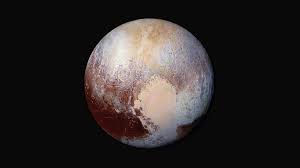THE JAMES WEBB TELESCOPE
- Reuben Dempster
- Jul 26, 2022
- 3 min read
Have you ever looked up into the stars and wondered what is out there? And how far away is it all really? Well, recently your question has been answered with the new stunning images from Nasa’s new James Webb Telescope. Not only are the images beautiful to view but they are also significant in our advancement of technology and space travel.
Launch/cost/age
The Telescope is an engineering marvel which well exceeded its 500 million dollar budget, the final cost being 10 billion dollars. James Webb's telescope dwarfs its predacecere the Hubble Space Telescope, which is now in 2022, 32 years since it launched from the Kennedy Space Center. While the James Webb Telescope launched on Christmas day 2021 and has since traveled a distance of about 1.5 million kilometers from earth to the point where the earth's gravitational pull and the sun equlizes, called the second Lagrange point, where it has deployed over 10 days and taken its first
Photographs.

Unlike the Hubble Telescope James Webb can take images with infrared, which creates a sharp and vivid image and allows us to see little details that are otherwise not visible. Not only this but James Webb is 100x more sensitive to light than Hubble, meaning even the most obscure light is visible. Using this technology the goal of the James Webb telescope is to look for unobserved galaxies and to look into gassy nebulas where the formation of stars occurs. To look where no human has looked before.

Hubble Telescope image of Eagle Nebula’s (Pillars of Creation), taken of the visible light.

Eagle Nebula’s (Pillars of Creation) taken by James Webb Telescope with infrared.
Eagle Nebula or otherwise known as the Pillars of Creation is a nebula located 6,500–7,000 light-years away from earth. It is the birthplace of many stars. The pillars of dust seen in the first image are molecular hydrogen and other molecules, which are waiting to collapse in on themselves and are created through the process of hydrogen being fused into helium. When we compare both images we can see that the Hubble telescope is no match to the detail produced by the James Webb Telescope through the use of its infrared lens. We can see millions upon millions of stars within the image. It gives us a spectacular idea of how small we really are within the universe.

This is the first image taken by the James Webb Telescope. If you hold a grain of sand at arm's length and point it at the sky, this is the amount of space that this image covers. The image is filled with galaxies that come in all shapes and sizes, there are spiral galaxies, irregular and elliptical. The stars seen in the image are stars within our own galaxy, the Milkyway, they are diffraction spikes that occur because of the hardware within the telescope. We see galaxies being pulled upon creating an arc by neighboring superclusters of galaxies' gravitational pull, distorting the galaxies. The gravitational pull creates arcs which we can see pull galaxies towards the center of the image. It is a staggering 13.1 million light years from earth and this means that we are looking into the past before even our own star (the sun) was formed.

Visible light on the left, infrared on the right
Previously hidden from Astronomers, the Southern Ring planetary nebula, has been unlocked by the James Webb Telescope. Approximately 2,500 light-years away, the Souther Ring planetary nebula is a dying binary star; we can see the second star in the infrared photo. What we can also see is the dying star ejecting dust and gasses, in a spectacular show of colors. The observations will allow scientists to better understand the death of a star and therefore a star's life cycle. In thousands of years, the dust will have been spread through space and there will be nothing left but the vacuum of space.
The James Webb Telescope shows the lengths that we humans will go to discover and explore. It will unlock the hidden secrets of our universe and inspire generations of people to wonder what's out there. James Webb is bringing the universe down to earth.





Comments